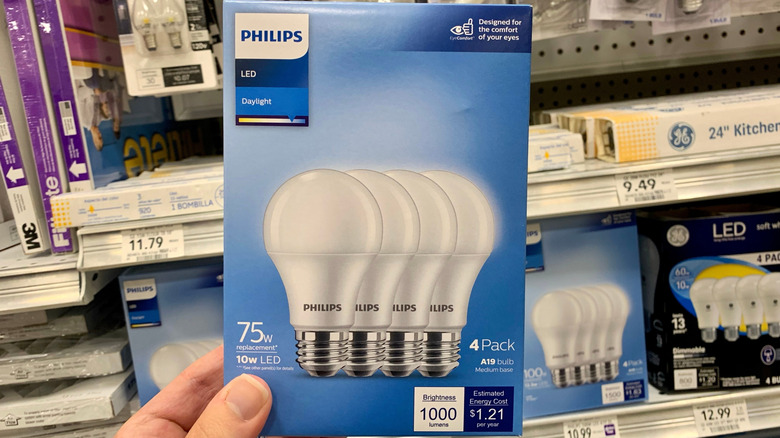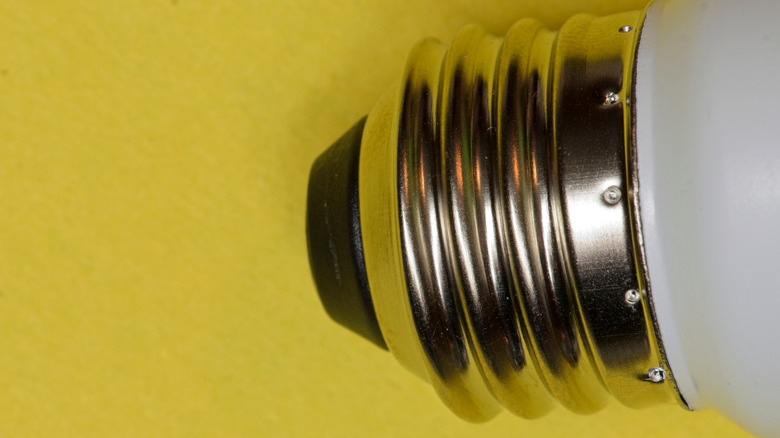A19 Vs. E26 Light Bulbs: What The Numbers Mean & How They're Different, Explained
When we head out to our local hardware store to purchase a new light bulb, we rarely think about the name of the light bulb that we are going to get. We are more concerned with figuring out what wattage the LED bulb is equivalent to an incandescent light bulb. Those names are on the boxes, though, if you care to look. These names are expressed in codes usually featuring a letter followed by a number, though there are certain codes that use two or three letters before the number. Two of the most common codes you will see are A19 and E26.
In an A19 bulb, the A refers to the shape of the bulb itself, which is that classic pear-shaped design. It being such a common design is why it got the first letter of the alphabet. The 19 refers to the diameter of the bulb's widest points. Oddly, this number is how many one-eighths of an inch that distance is. So, an A19 bulb has the widest diameter of 19 divided by eight, i.e., 2.4 inches. Outside of the United States, this bulb is often called an A60 to denote millimeters.
An E26 bulb, on the other hand, has nothing to do with the shape of the bulb. Instead, it refers to the bulb's base screw. The most common of these bases has what's called the Edison screw, hence the E in the name. The 26 is the diameter of that base in millimeters, as opposed to the diameter of the actual bulb. What muddies the waters with A19 and E26 light bulbs, though, is that they are often one and the same.
All A19s are E26s, but not all E26s are A19s
Back in elementary school, while learning the basics of geometry, you quickly realize that all squares are rectangles, but not all rectangles are squares. This same logic can be applied to A19 and E26 light bulbs. If you go to purchase an A19 light bulb, it is also going to be an E26 bulb. Every A19 bulb utilizes that 26-millimeter base with the Edison screw for its base. Because the names refer to different parts of the light bulb, they don't cancel each other out. However, there are other-shaped bulbs that also use the E26 bulb base. You can find them on anything from wider flood lights like BR30 bulbs to vintage-look ST19 bulbs. Because the Edison screw is so commonplace, light bulb manufacturers have made an effort to make E26 bases for as many bulb shapes as they can.
Very importantly, there are also E27 bulbs out there, which uses the same Edison screw design but have a diameter that is one millimeter wider. Because that is such a small difference, you can very easily screw each of them into the same socket, but you do not want to do this. E26 light bulbs are designed to work in 120 V sockets, whereas E27 bulbs work in 240 V sockets. Having the wrong voltage can cause a ton of safety issues, much like using a bulb with the wrong wattage. You are mostly going to encounter E26 light bulbs in the marketplace, but you just need to keep your eyes open.

